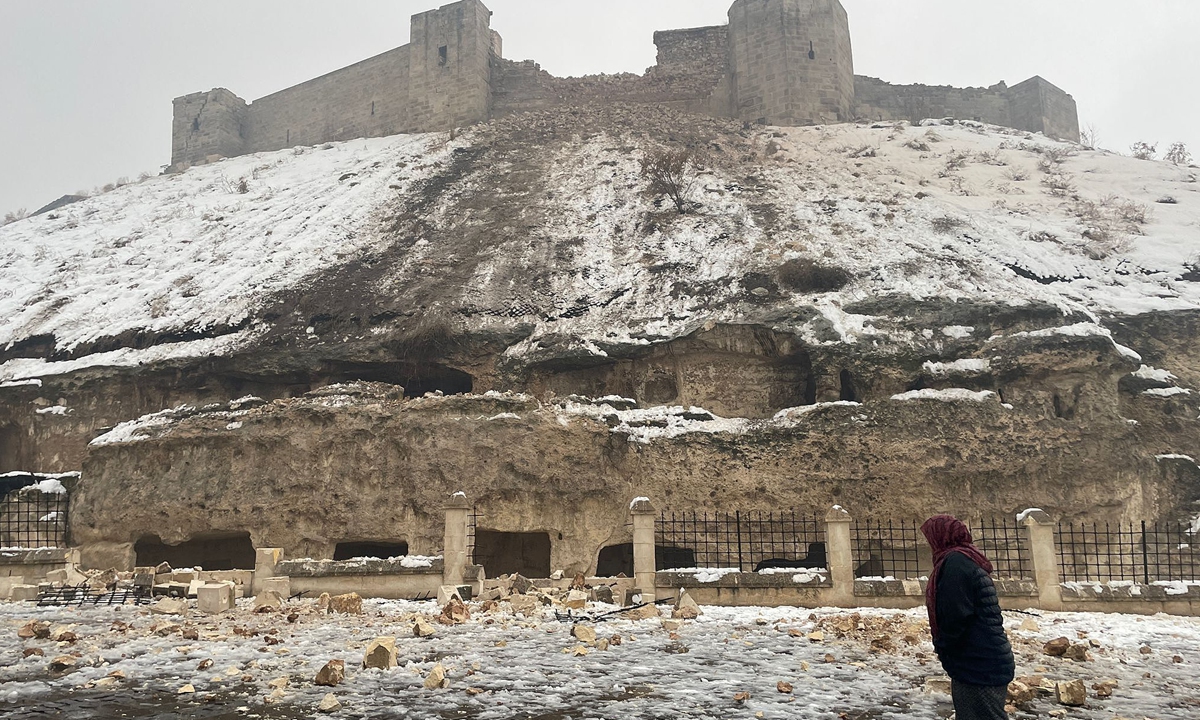ARTS / CULTURE & LEISURE
Earthquakes in Turkey, Syria spark concern for cultural relics protection

A view of damaged historical Gaziantep Castle after a 7.4 magnitude earthquake, in Gaziantep, Turkey on February 6, 2023. Photo: VCG
Several ancient sites in Turkey and Syria, including a Roman-era castle in the Turkish city of Gaziantep, were badly damaged by the fatal earthquakes on Monday that have killed more than 5,000 people. China has been trying to develop diverse methods to protect the safety of cultural heritages from damages of natural disasters.
Video clips that have gone viral on social media show that parts of the stone walls of the second-century Gaziantep Castle, which stands on a hill in the middle of the eponymous city near the first earthquake's epicenter, have collapsed and cascaded down the side of the fort.
Across the border in Syria, the ancient citadel of Aleppo, a UNESCO World Heritage site, was also badly damaged. Cracks have appeared in several parts of the wall, portions of which have collapsed. The fortress was built in the 13th century, but the city itself served as a vital trade hub for more than 1,000 years.
Natural disasters, such as earthquakes and floods, often happen suddenly and catch countries off guard. With this in mind, how to prevent cultural heritages from being damaged by these disasters has been always one of the most important issues for Chinese cultural researchers.
Many of China's ancient buildings have been able to survive earthquakes because of wooden structures that can cope with strong shocks because of their elasticity, while preventive measures as well as regular conservation and repairs to reinforce the weaknesses in buildings also helps a lot, Tian Lin, a professor at the Beijing University of Civil Engineering and Architecture, told the Global Times.
Many cultural relics preserved in Chinese museums have been fitted with equipment that prevent earthquake damage such as "reverse shock absorbers." For instance, at the Chengdu Museum in Southwest China's Sichuan Province, which is located within a seismic belt, researchers equipped more than 300 points on the underside of the museum with "shock-isolating rubber supports" in order to better protect the museum and its collections.
Many Chinese museums have adopted vibration monitoring systems to assess the impact of earthquakes on buildings and cultural relics.
Besides using advanced technologies to prevent earthquake damage, digital conservation efforts have gained more attention as an important means to preserve cultural heritage and provide information for the repairs and restoration of these objects if they are damaged, Gong Decai, a professor at the University of Science and Technology of China and expert on cultural relic conservation, told the Global Times on Tuesday.

